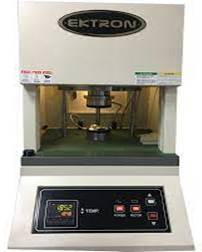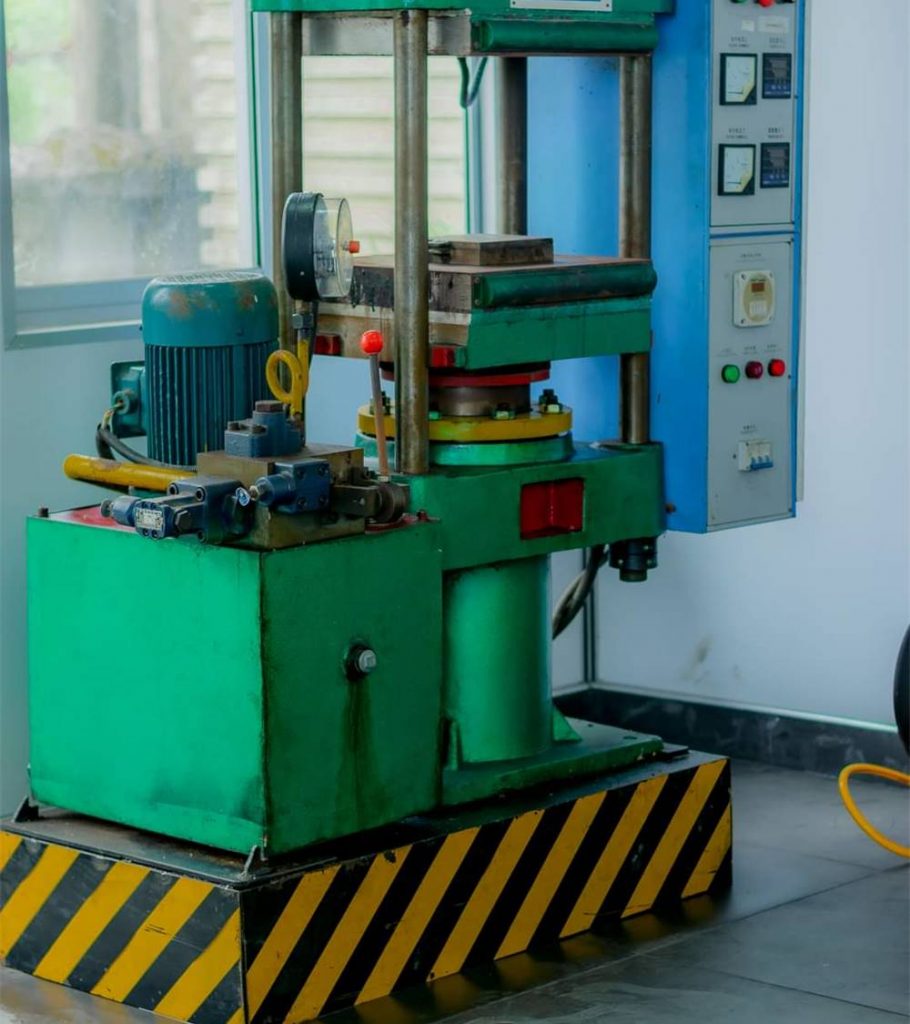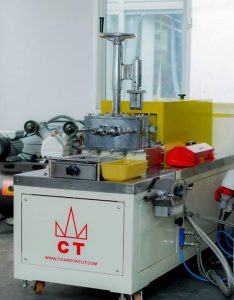
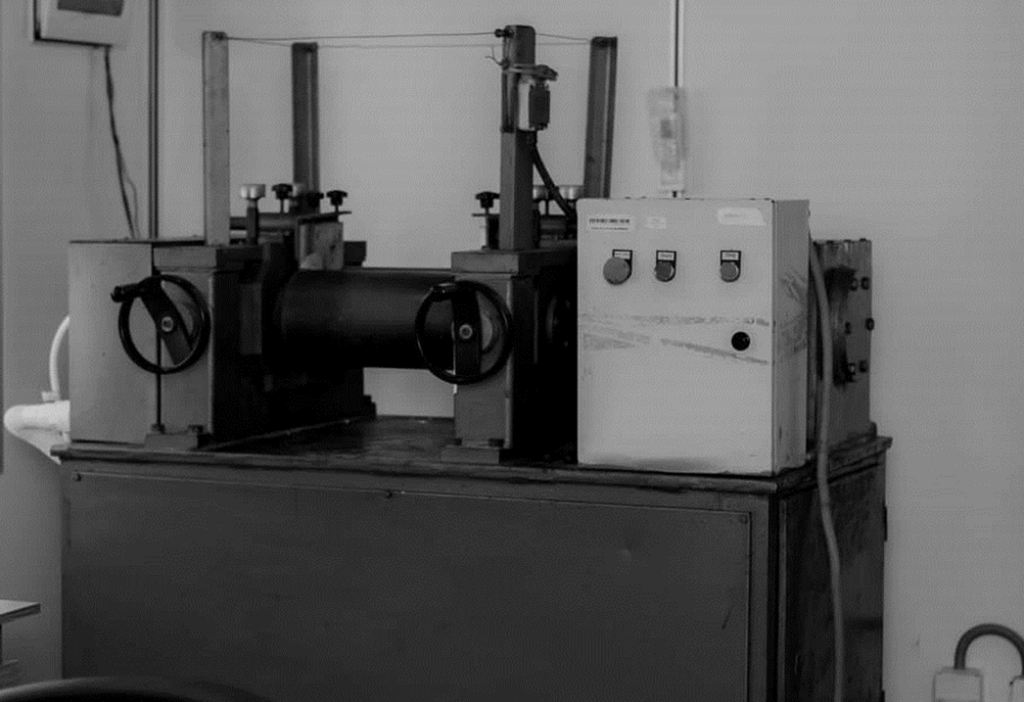
TWO ROLL MILL



INTERNAL MIXER

CT Internal Mixer is suitable for many applications:
•Rubber and/or Plastic Blending
•Thermoplastic Elastomer Preparation
•Food Product, i.e. Starch Modification
The CT Internal Mixer is a versatile machine designed for the thorough blending of polymers and chemical additives, as well as for mixing various polymer types across a wide spectrum of shear rates, flow patterns, and temperatures. This mixer offers flexibility through interchangeable mixing chambers and rotors (Roller and Cam types). Users can easily detach the front plate and mixing chamber using side handles. Achieving excellent dispersion is essential for producing high-quality polymer compounds and composites, setting the stage for successful final product fabrication.

SPECIFICATION
Chamber, rotors and ram of CT Internal Mixer are made of hardened tool steel gaining the hardness of 50 – 53 with C(CrN) surface treatment to gain surface hardness, increase wear resistance, corrosive resistance, oxidative resistance and decrease stain occurrence and friction coefficient.
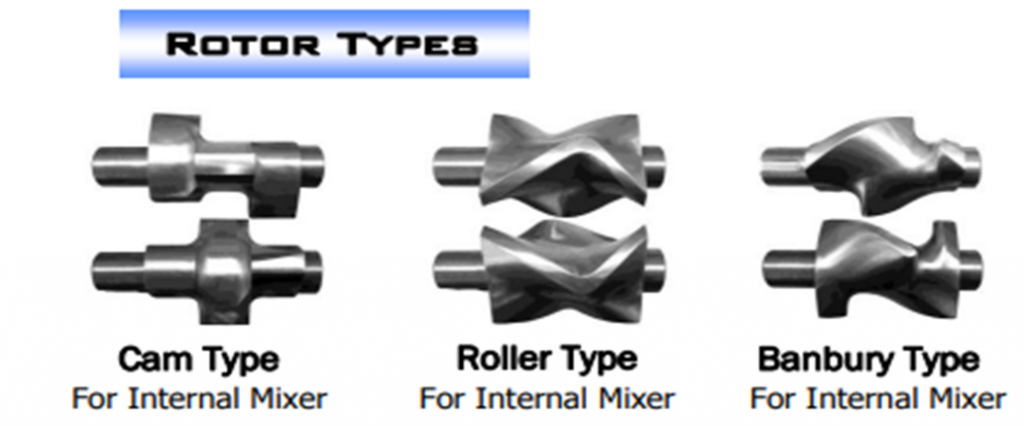
| MODEL | MX75 | MX300 | MX500 |
| Heating | Electric Heaters Controlled by PID Digital Temperature Controller | ||
| Air Cooling System – Cooling Channels in Mixing Chamber | Yes | Yes | Yes |
| Max. Operating Temperature (℃) | 300 | 300 | 300 |
| Free Volume of Mixture Chamber (mL) with CAM or CTEF Rotors Mounted | 75 | 300 | 500 |
| Speed Ratio Driven / Non-Driven Rotors | Normal 1:1 (For Internal and Intermeshing Mixers) Normal 3:2 (For Tangential Internal Mixers only | ||
| Adjustable Rotor Speed (rpm) by Inverter | 0 – 140 Digital Display | ||
| Suggested Charge 70% of Total at 1.0 Specific Gravity (g) | 53 | 210 | 350 |
| Main Motor (kW) | 3.7 | 5.5 | 7.5 |
| Power Supply | AC 3 Phase / 380 – 440 V / 50 – 60 Hz | ||
| Mixing Torque and Temperature Software / PC Computer | Optional (with ‘”TQ” models) | ||
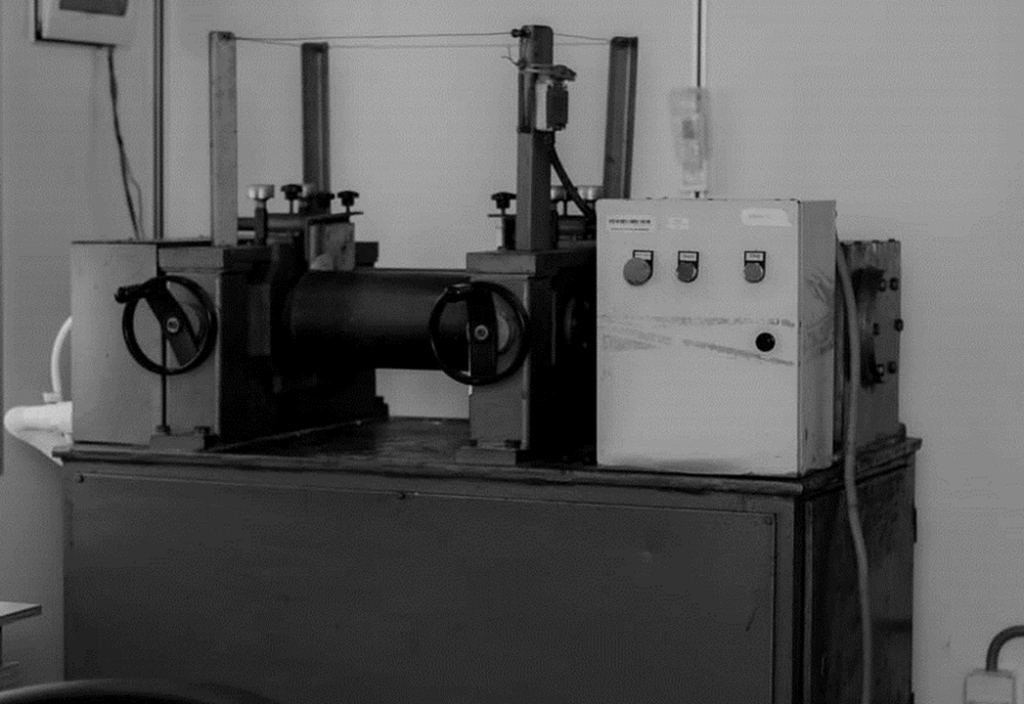
•The primary purpose of a two-roll mill is to efficiently disperse, blend, and refine raw rubber materials along with various additives to create a uniform rubber compound. The process involves feeding the raw rubber and additives onto the first roll, which pulls the material into the nip between the rolls. As the rolls rotate, they compress, shear, and mix the rubber, causing it to be kneaded and worked thoroughly. The friction and heat generated by the rotation of the rolls help soften the rubber, making it more pliable and facilitating the incorporation of additives.
MDR (MOVING DIE RHEOMETER)
•MDR is a high precision instrument that offer excellent sensitivity and reliability of measurements for the evaluation of vulcanization properties of rubber compounds.
•The instrument has been designed for ASTM D5289 and ISO 6502 standards for evaluating rubber vulcanization characteristics, curing time, and crosslinking rate. The rubber test piece is contained in a biconical die and maintained at a stable die temperature. Through the oscillation of the lower die at a small rotary amplitude, a precise transducer installed upon the upper die will measure the reaction torque of the vulcanizing rubber.
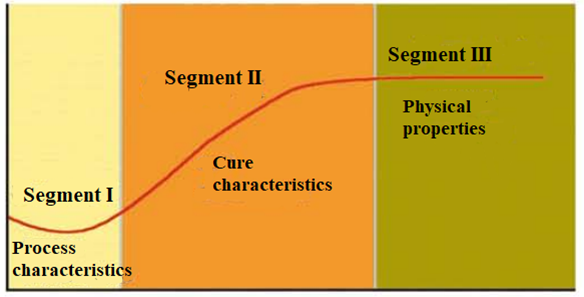
Curve Segments
The curve produced by this instrument enables you to analyze not only the stability of rubber compounds but also its processing properties.
Typically, the cure curve can be divided into three segments. Segment I provides information related to the processing characteristics, such as
viscosity and fluidity. Segment II shows the characteristics of curing rate.
Finally, Segment III indicates the physical properties of the cured rubber, such as stiffness, hardness, and strength.

Cure curve types
As shown in the following picture, according to the differences in rubber compounds, the cure curves are classified in three types depending on the behavior of the rubber in its vulcanized stage:
1. Vulcanization to equilibrium torque (MHFP).
2. Vulcanization to a maximum torque with reversion (MHFR).
3. Vulcanization with continuously increasing torque (MH).
UNIVERSAL TESTING MACHINE (UTM)
A Universal Testing Machine (UTM) is a versatile mechanical testing apparatus used to evaluate the mechanical properties and performance of various materials, components, and products. It operates by subjecting test specimens to controlled loads and measuring their response, allowing engineers and researchers to understand how materials behave under different conditions. UTMs are widely employed in industries such as manufacturing, materials science, construction, and research laboratories
Tests Conducted Using Universal Testing Machine
- Tensile Test: This test determines a material’s response to axial loading. A specimen is pulled apart along its length to measure parameters such as ultimate tensile strength, yield strength, elongation, and modulus of elasticity.
- Compression Test: In this test, a specimen is compressed between two parallel plates to assess its behavior under compressive forces. Properties like compressive strength, yield point, and deformation characteristics can be determined.
- Bending Test (3-Point Bending): This test evaluates a material’s flexural strength and stiffness by applying a load to the center of a beam-like specimen, causing it to bend. It is essential for assessing materials used in structural applications.
- Peel Test: Used for adhesive materials, this test measures the force required to peel apart two bonded surfaces.
Young’s Modulus Determination: UTM can measure Young’s modulus, a material’s stiffness, by subjecting specimens to small strains and measuring stress responses.
COMPRESSION MOULD
•The hot press is a crucial piece of equipment used in the rubber industry for the curing or vulcanization process. Curing is a chemical process that transforms raw rubber into a more durable and resilient material by cross-linking its polymer chains. This process involves the application of heat, pressure, and often additives like curing agents or accelerators to achieve the desired material properties. The hot press plays a central role in controlling these parameters during rubber curing.


